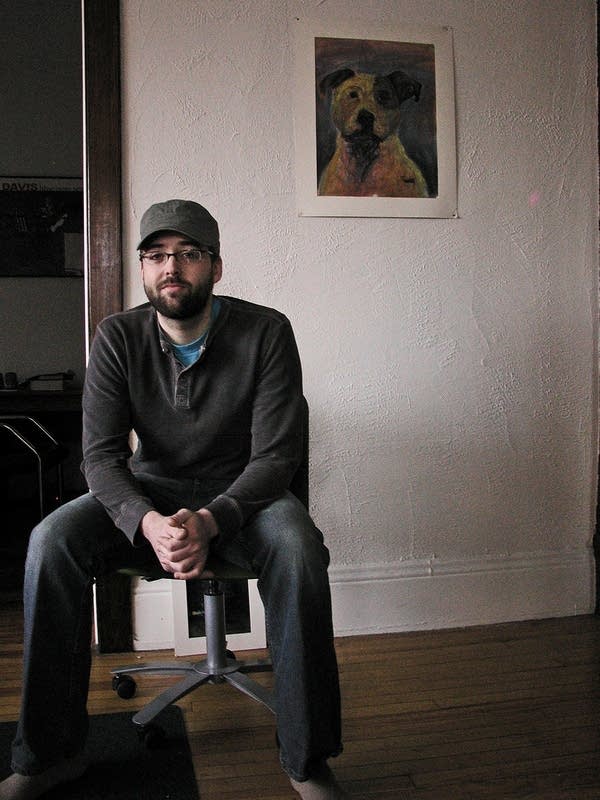Private college loans may spell trouble for students
Go Deeper.
Create an account or log in to save stories.
Like this?
Thanks for liking this story! We have added it to a list of your favorite stories.

When he first started studying architecture at the the University of Minnesota, Tom Hilde paid about $6,300 a year in tuition. By the time he graduated in the spring of 2007, that number had climbed to more than $8,600 a year. In that time, Hilde built up $30,000 in loans. The reality of that choice is becoming clearer now that he's paying the loans pack.
"When they tell you you have a six-month grace period, in the eyes of a college student that seems like more than enough time to go out and get a job and get set and ready to pay for your loans," he says.
Hilde first turned to federally administered Stafford student loans. But when he reached his loan limit, he felt he had no choice but to turn to loans from private lenders. Now, as he pieces together internships in his field and other low-paying jobs, the loan payments are a burden.
"I called them and told them I could pay my loans for a couple months, but I'm pretty sure I'm going to run out of money eventually," he said. "So, is there something I can do right now to avoid running out of money really quickly--maybe lower my payments or get a deferral and then start paying again when I have a steady job?"
Turn Up Your Support
MPR News helps you turn down the noise and build shared understanding. Turn up your support for this public resource and keep trusted journalism accessible to all.
He quickly secured a deferral for his federal loans. But the private lenders would grant him no leeway.
A report released by the National Consumer Law Center highlights the problem faced by students and recent graduates like Hilde: steep tuition increases force students to take on more and more debt from private lenders. Then, a tight job market makes it hard for them to pay the loans back.
The private student loan market has exploded in the past five years and students are just now waking up to the long-term consequences, according to the center's staff attorney, Deanne Loonin.
"They're just not in the economic shape they hoped they would in. They're just not able to pay their loans. They have huge amounts of debt. It affects their credit. It affects their ability to build assets for the future," she says.
Private lenders are not required to release information about default rates. But student surveys indicate a growing negative trend, Loonin says. In addition to higher tuition and persistently low federal loan limits, sophisticated marketing has greatly increased private lenders' share of the market, she says.
"One thing they do is play up the ease of getting a private loan as opposed to having to fill out a form that's required for the federal loans. There are a lot more hoops to jump through, but it's worth it because not only are the federal loans more affordable, there are a lot more protections that come with it."
Many, if not all, of what college administrators refer to as "alternative loans" are offered at variable interest rates. That's the same practice that fueled the foreclosure crisis in the home mortgage industry once the rates started rising. In addition, private lenders are not bound by regulations requiring flexible repayment options.
It's a bad mix that is sometimes difficult to convey to students trying to balance studies and finances, according to Dakota Community College Financial Aid Director Scott Roelke.
"There's been a rise recently in direct to consumer marketing of student loans. You've probably seen television ads where they will tell the student you can borrow $40,000 today."
Roelke is the Minnesota president of the National Association of Student Financial Aid Administrators. Both Roelke and his counterpart at St. Olaf College, Kathy Ruby, say they don't see signs yet that student borrowers are defaulting at significantly higher rates than before. But that could very well change as the mortgage crisis and other economic factors make it more difficult for lenders to make a profit, Ruby says.
"The tightening of credit market has also affected private student loans so that they're becoming harder to borrow, is what we're hearing. And the players in the market are changing. The market is shifting in terms of what is available."
Federally backed loans are almost always the best, first choice, Ruby says. That's a lesson recent graduate Tom Hilde says he now appreciates.
"Pretty much I've just been paying my normal monthly payments, knowing that I will be out of money soon enough," he says.
Hilde says he probably won't default on the loan, but will have to turn to his parents for help. Or he may enter graduate school which automatically puts student loan payments on hold, but would hike up his debt even further.
Dear reader,
Your voice matters. And we want to hear it.
Will you help shape the future of Minnesota Public Radio by taking our short Listener Survey?
It only takes a few minutes, and your input helps us serve you better—whether it’s news, culture, or the conversations that matter most to Minnesotans.




